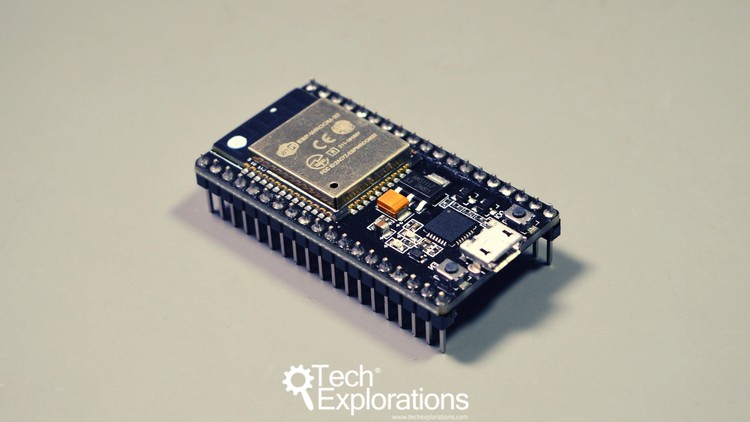
ESP32 For Arduino Makers
The ESP32 is a powerful microcontroller.
It integrates Wifi and Bluetooth, many GPIOs, analog input and output capabilities, many device interconnection protocols, a fast dual-core processor.
All that, at a low price.
And best of all: you can use your existing Arduino knowledge and skill to turbo-charge your projects.
Especially if you have already learned how to use the Arduino Uno in your projects, it is likely that you have hit a hardware limitation.
Perhaps your projects needed more memory, more speed, or more pins.
With the ESP32, you can get a lot more capacity to build more interesting projects, almost for free.
However, the ESP32 is not a plug-in replacement for the Arduino.
While it shares much of the Arduino’s programming and GPIO interface, you still need to learn the basics before you can deploy it.
This is the purpose of this course.
In this course you will learn:
- What is the ESP32.
- What are the various modules with that name, and how these modules are available to us in the form of development kits.
- What are the differences and similarities between the ESP32 and the Arduino.
- How can we use what we know from the Arduino to make things based on the ESP32.
- How can we use the ESP32 GPIOs to work with simple components like LEDs and buttons, but also to drive peripherals like displays, sensors (including the integrated ones) and motors.
- How can we set up the familiar Arduino IDE so that we can write programs for the ESP32.
- How to store data in non-volatile memory.
- How to communicate with near field devices and the Internet.
In this course, I have also included numerous mini-projects to demonstrate how to use capabilities such as GPIO read and write, classic Bluetooth, Bluetooth Low Energy, Wifi, digital to analog conversion, touch sensors, and more.
Complete x86 Assembly Programming | 120+ Practical Exercises Udemy Free Download
Larger projects will also show you how to create simple Internet of Things and Bluetooth applications, to name a few.
If you are ready to learn more, please be sure to watch the lectures in this introductory section to find our more.